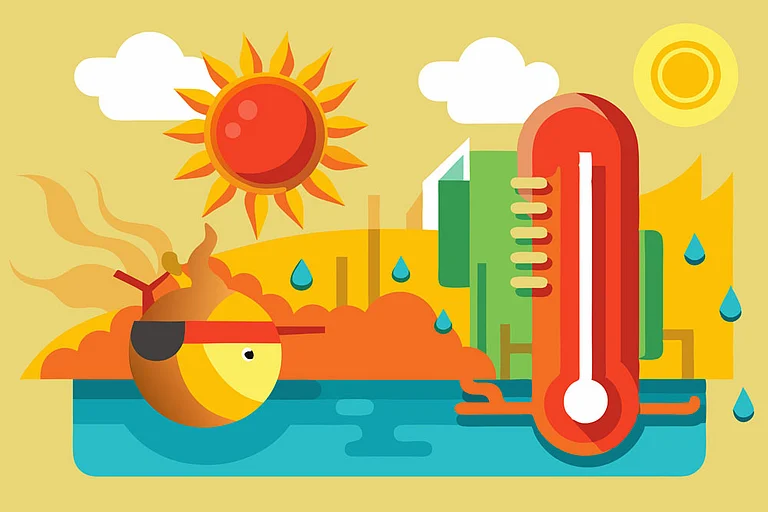The Indian Meteorological Department has issued a yellow alert in Delhi, forecasting a heatwave in the city till April 9. The IMD predicted mainly clear sky with heatwave for April 7. The maximum and in Delhi are expected to be between 40 to 42 degrees Celsius and minimum temperatures will vary between 21 degrees Celsius to 23 degrees Celsius respectively.
The national capital recorded a maximum temperature of 38.2 degrees Celsius on April 6, which is 3.1 notches above the seasonal average, according to the IMD. The minimum temperature of the national capital was 18.5 degrees Celsius, which was 1.5 notch below the seasonal average, reported WION. The IMD also predicted a heatwave for the next four to five days for a majority of the northern plain areas, including those in Rajasthan, Haryana Chandigarh and Punjab.
India and Extreme Heat
According to Sustainable Futures Collaborative (SFC), India is expected to experience increased deaths due to more frequent, intense and prolonged heatwaves in the coming years. The authors surveyed nine major metro cities and identified short-term and long-term emergency measures to mitigate increasing heatwaves. The cities include, Bengaluru, Delhi, Faridabad, Gwalior, Kota, Ludhiana, Meerut, Mumbai and Surat- together constitute over 11% of India’s urban population and are India’s most at-risk cities for future heat, reported The New Indian Express.
The SFC report suggested urgent institutional changes to measures including assessing vulnerability and identifying urban heat islands, building the capacity of health staff and implementers of the heat action plan and investing in technology to provide energy-efficient cooling devices.
The report underscored the barriers to implementing the heatwave mitigation plan, stating that ‘coordination problems among institutions’ emerged as the top barrier, followed by competing priorities limiting the focus on heat.
BBC further reported that climate change-induced extreme weather events have led to significant economic losses across all sectors, with agriculture being affected the most, accounting for 16% of Indian GDP and providing nearly half of the employment. Between 2016-2021, extreme weather events such as cyclones, flash floods, floods and landslides caused damage to crops over 36 million hectares— a $ 3.75bn loss for farmers.
As per the BBC report, the annual expected damage from tropical cyclones and river flooding at 3 degrees Celsius is 4.6 to 5.1 times that from 1.5 degrees Celsius. Labour productivity is projected to decline 5% from the 1986–2006 reference period, under 1.5 degrees Celsius of warming, 2.1 times more at 2.5 degrees Celsius and 2.7 times at 3 degrees Celsius.
























